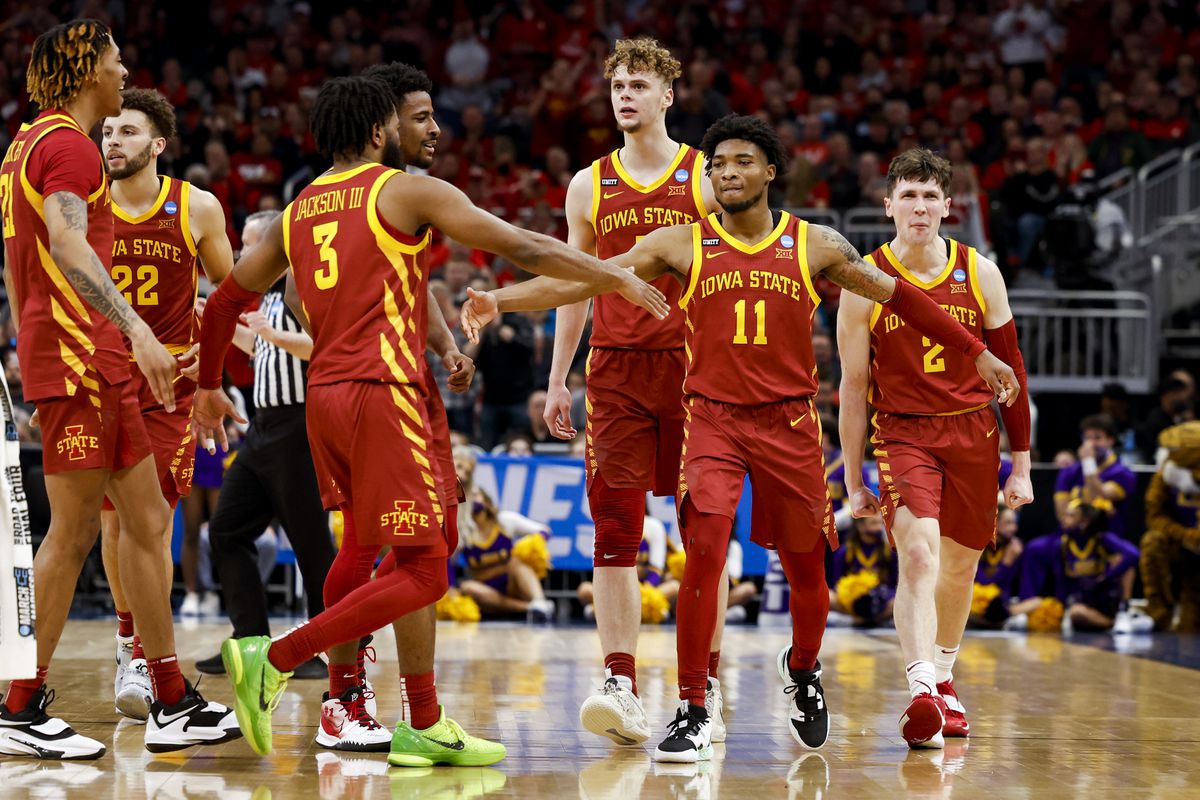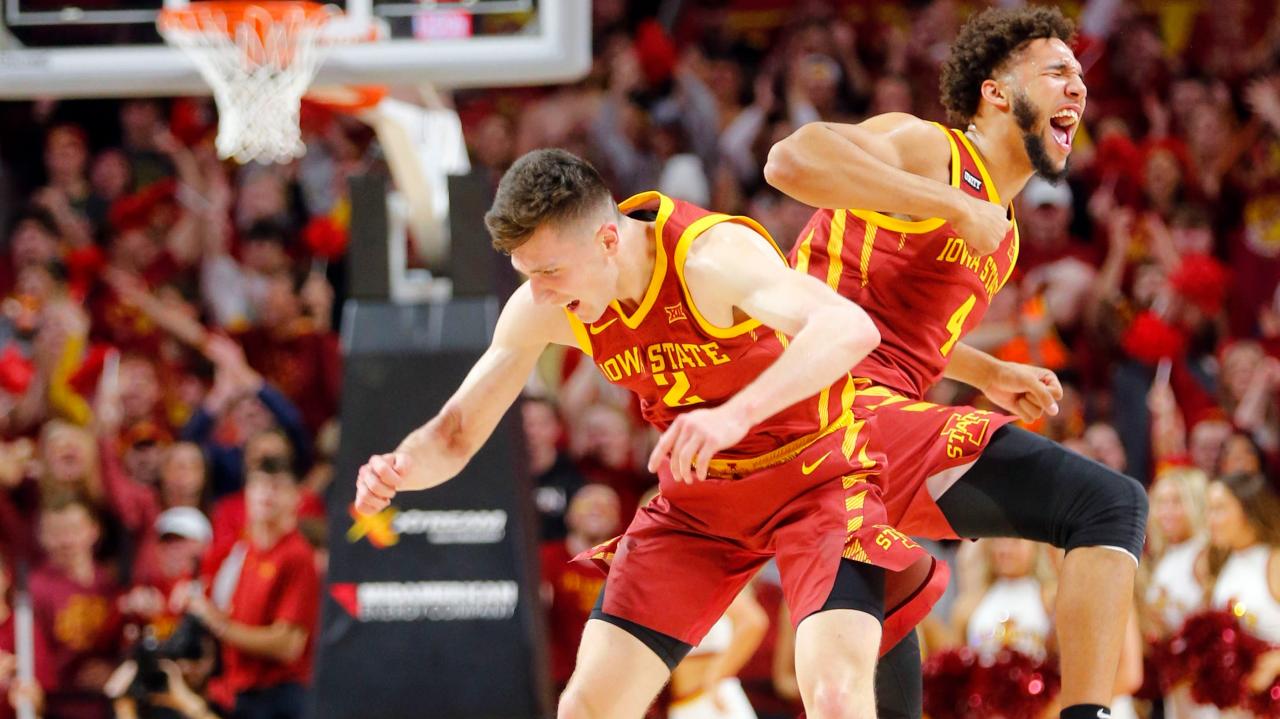History
Early years (1901–1922)
Iowa basketball has its roots in 1901, when Ed Rule coached the Hawkeye Keys to a 10-2 record in his first basketball season. Earlier, when the sport was developing and still in a club format, Iowa played the University of Chicago club in the first college five-on-five game on January 18, 1896. Rule coached the Hokies in four non-consecutive seasons (1901–02, 03–04, 05–07), leading Iowa to a 37–15 record under his watch. Even today, Rhule’s winning percentage is the best among any head coach in Iowa basketball history.

Coach Ed Rule, 1907
In addition to Ruhl’s tenure, the Falcons were coached by: Fred Bailey (1902–1903), John Chalmers (1904–1905), John Griffith (1907–1910), Walter Stewart (1910–1912), Floyd Thomas (1912–1913) , Maury Kent (1913–1918), Edwin Bannick (1918–1919), and James Ashmore (1919–1922). In the multi-sport coaching era, Chalmers (24–8), Griffin (2–4), Kent (assistant) and Asmore (assistant) also coached Iowa Hawkeyes Football. Kent pitched briefly for the Brooklyn Dodgers and coached the Iowa Hawkeyes (42-26), as did Chalmers (24-6), Stewart (16-12), Ashmore (23-20) and Griffith (9-6). In 1902–23, Iowa’s best basketball finish in conference play was fifth three times. Iowa began play in the Western Conference (1902–1917), which evolved and changed its name to the Big Ten Conference beginning in 1917–1918.
The Sam Barry Era (1922–1929)
But that all changed when Sam Barry was hired as Iowa State’s 10th head coach. In Barry’s first season, 1923, Iowa went 13–2 overall and won the Big Ten Championship for the first time in school history. The winning didn’t stop there: the Falcons also tied for the Big Ten championship in 1926, along with Indiana, Michigan, and Purdue. Barry also coached the Iowa Hawkeyes baseball team, going 19-15 in 1923-1924. Before Barry continued his Hall of Fame career at USC in 1929, he wrote a sports reference book, Basketball: The Individual Game and the Team Game, featuring Iowa State players and equipment. 62-54 at Iowa, Barry remained at USC until his death in 1950 at age 57. Barry was inducted into the Naismith Basketball Hall of Fame in 1979.
The Rollie Williams Era (1929–1942)
Barry was followed in the Hawkeye coaching ranks by Rollie Williams, who coached Iowa twice, from 1929 to 1942 and in 1951. Williams’ 51.5% (139-131) winning percentage and long tenure at Iowa made him the winningest coach in Iowa history until Lute Olson, Tom Davis, and Fran McCaffery surpassed him.
Early in Williams’ tenure as head coach in 1929, Iowa teams were suspended from the Big Ten for violations of conference rules. After a Big Ten investigation revealed an illegal slush fund and possible recruiting violations, Iowa acquiesced to the Big Ten’s demands and was eventually reinstated to the conference on February 1, 1930. Fourteen players, including four from the basketball team, were ruled ineligible as a result of the Big Ten’s findings.
Neal Kinnick, 1939 Heisman Trophy winner for the Iowa Hawkeyes, also played basketball at Iowa. Starting under Williams in 1937-38 as a sophomore, Kinnick finished 2nd on the team and 15th in the Big Ten with 75 total points (6.3 ppg) that season, his only hoops season.
Williams left Falconry in 1942 during World War II to enlist in the Navy. He would return to Iowa after his service and coach his final season in 1950-51, after illness sidelined Pop Harrison the previous season.
In all, Williams spent 42 years at the University of Iowa (1924–1966), serving in various coaching capacities and moving into athletic administration at Iowa following his coaching career.
The Pops Harrison Era (1942–1950)
Just as the country came out of the Depression, so did the state of Iowa basketball. After a rocky 7–10 season in 1943, Pops Harrison led the Hokies to their third overall Big Ten title (and first non-shared title) in 1945.
Murray Weir was the centerpiece of Pops Harrison’s team from 1944 to 1948, as Weir was a four-year starter under Coach Harrison and turned into a prolific scorer, leading the NCAA. In 1944–45, the Hawkeyes won the Big Ten Conference season championship. The Falcons finished second to the Michigan Wolverines in the Big Ten during Weir’s senior season in 1947–48.
Bucky O’Connor Era (1949–1958)
After playing for and graduating from Drake University, O’Connor first came to Iowa from Boone Junior College in Boone, Iowa. He began his career at Iowa State as the first basketball coach and head golf coach in 1948. In 1950, O’Connor took over after the resignation of the first two coaches from the 1949–50 season. He became an official coach in the 1951–52 season. After a brief stint with O’Connor in 1950 and Rollie Williams (assisted by O’Connor) throughout 1950-51, filling in for an ailing Pops Harrison, O’Connor became Iowa’s full-time coach in 1951. O’Connor believed that that position and achieved great success until his death on April 22, 1958.
Chuck Darling was an early standout player under O’Connor. Darling was a consensus first-team All-American in (1952), along with being named 1952 first-team All-Big Ten. Darling was the first round pick (#8 overall) of the Rochester Royals in the 1952 NBA Draft. Instead, he played for the AAU Phillips 66ers in order to remain an amateur. He later played in the 1956 Olympics.

The fabulous five / back to back Final Fours
In 1953, Iowa finished second in the Big Ten behind the efforts of an all-sophomore starting lineup nicknamed the “Fabulous Five”: Charm Scheuerman, Bill Seaberg, Carl Cain, Bill Skough and Bill Logan.
As juniors, Iowa’s “Fabulous Five” won the Big Ten straightaway and eventually was ranked fourth in the nation, advancing to the Final Four of the 1955 NCAA Tournament, defeating Penn State 82–53 and Marquette 86–81 in advance.
In 1955-56 as seniors, Iowa won the Big Ten again and reached the Final Four of the 1956 NCAA Tournament. They beat Morehead State 97-83 and Kentucky and coach Adolph Rupp 89-77 to reach the Final Four. There they defeated Temple 83-76 to advance to the NCAA Championship game. Iowa lost to Bill Russell’s San Francisco Dons 83-71 in the NCAA finals. San Francisco finished the season undefeated.
Despite losing the championship game, the Hawkeyes recorded back-to-back Big Ten championships for the only time in school history.[11] Scheuerman, Seaberg, Cain, Skuff and Logan, all members of the “Fabulous Five”, retired in 1980.
1956 USA, basketball Olympians
Chuck Darling and Carl Cain were members of the 1956 US men’s Olympic basketball team that won the gold medal at the 1956 Melbourne Olympics. Hall of Famers Bill Russell and CC Jones were members of the team. At the Olympics, Darling averaged 9.3 points per game.
